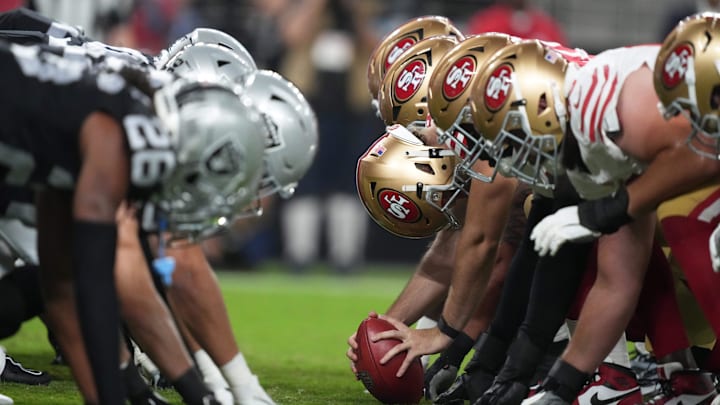"Illegal formation, offense ... five-yard penalty, repeat the down."
That sentence was heard a lot during the opening quarter of Thursday's NFL season opener between the Baltimore Ravens and Kansas City Chiefs.
But why? That kind of penalty was previously a rarity in the NFL — usually chastised by fans as a ticky-tacky flag thrown at the worst possible moment.
The NFL informed teams in the offseason that the penalty would be a point of emphasis early in the season, according to ESPN's Pat McAfee who got an explanation from league sources Friday.
I reached out to source(s) at the NFL office about all of the illegal formation calls..
— Pat McAfee (@PatMcAfeeShow) September 6, 2024
It's definitely a point of emphasis and it's gonna be something they're trying to sort out early in the season #PMSLive pic.twitter.com/o3FeFF1M8J
So what is an illegal formation penalty?
According to the NFL rule book, in order for a team to be in a legal formation it must meet the following criteria on offense:
- It must have seven or more players on the line of scrimmage.
- Eligible receivers must be on both ends of the line, and all of the players on the line between them must be ineligible receivers.
- No player may be out of bounds.
On defense (punt formation, field goal or extra point try):
- Every player within one yard of the line of scrimmage must be outside the snapper's shoulders.
- No more than six players can be on the line of scrimmage on either side of the snapper (field goal/extra point try only)
What part of the rule did teams break so often on Thursday?
Using the calls against the Ravens on Thursday night as an example, players on the edge of the offensive line (usually the third man out from the center) have to have their head break past the beltline of the center.
Meaning, the offensive line has to stay as straight to the line of scrimmage as possible. The NFL competition committee decided in the offseason that the bowing or curvature to offensive lines that had been developing was too much of an advantage over defenses.
McAfee and co-host AJ Hawk further explained what that meant on Friday's show.
The NFL was definitely sending a message..
— Pat McAfee (@PatMcAfeeShow) September 6, 2024
This is gonna be TOUGH for tackles #PMSLive https://t.co/BhWVQqUdZH pic.twitter.com/ACEiOCGjky
Why were the Ravens called for it more than the Chiefs?
That's a question for the league office. Ravens left tackle Ronnie Stanley expressed his displeasure, feeling he was singled out as the early example, per The 33rd Team's Ari Meirov.
#Ravens LT Ronnie Stanley believes the league singled him out with the illegal formation penalties last night and says it wasn’t called evenly for both teams.
— Ari Meirov (@MySportsUpdate) September 6, 2024
“The way it was going through the game, I really feel like they were trying to make an example and chose me to be the… pic.twitter.com/SkLY91hiht
Regardless, NFL teams will surely be taking note and addressing any discrepancies in practices and walk-throughs. But fans, players and coaches will still complain per usual just as any rule change or enhanced enforcement goes.
